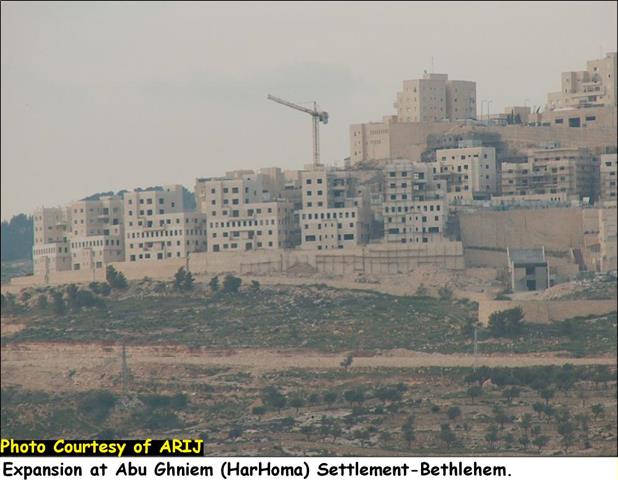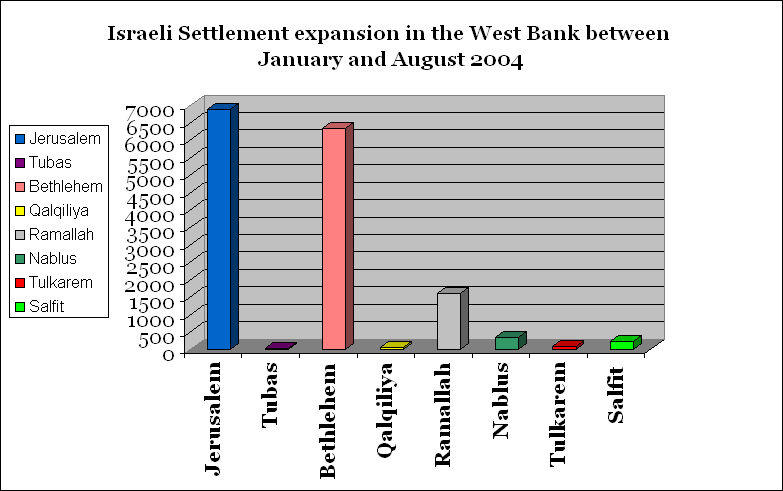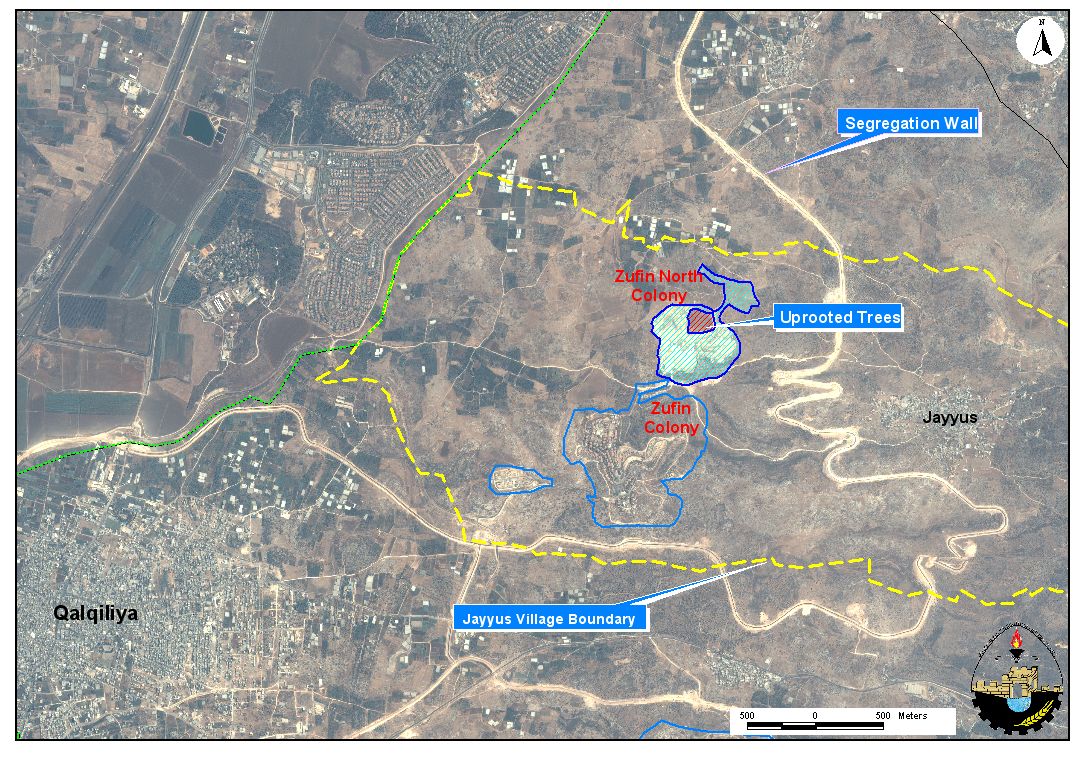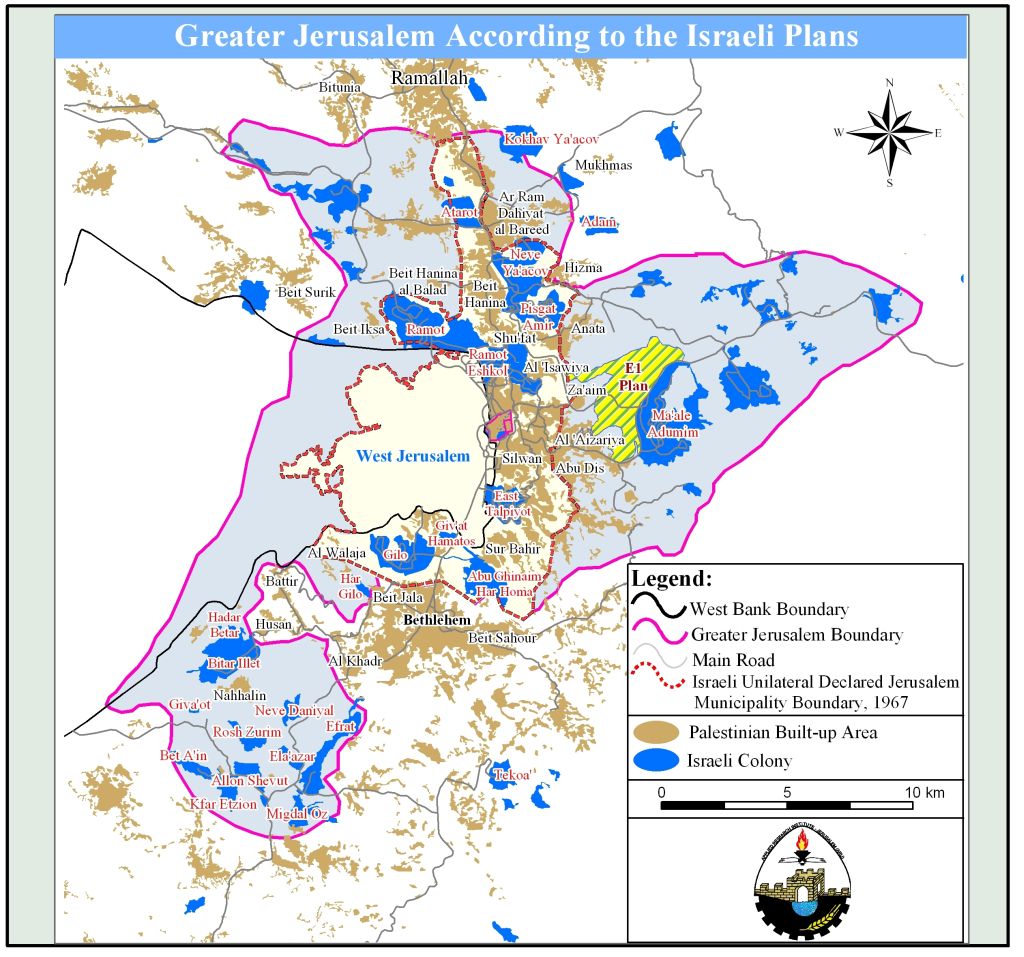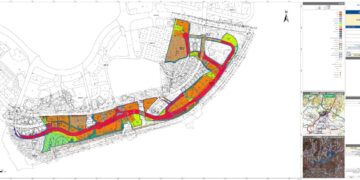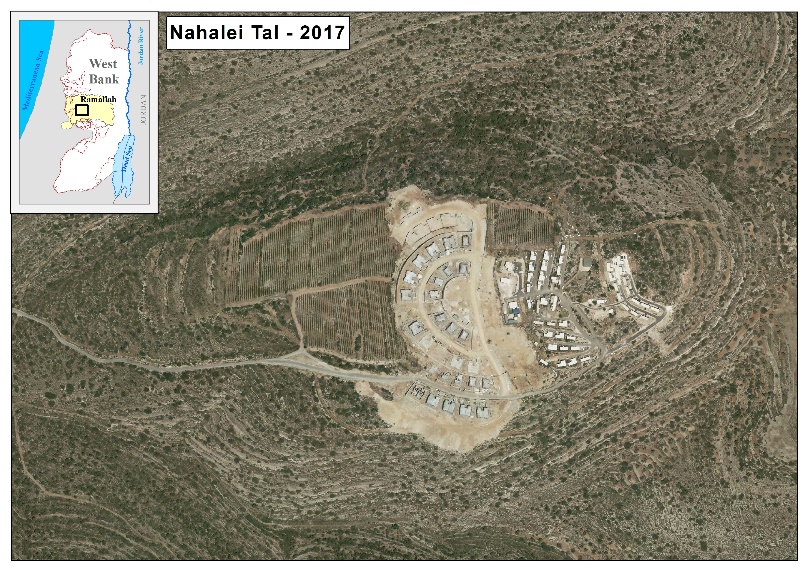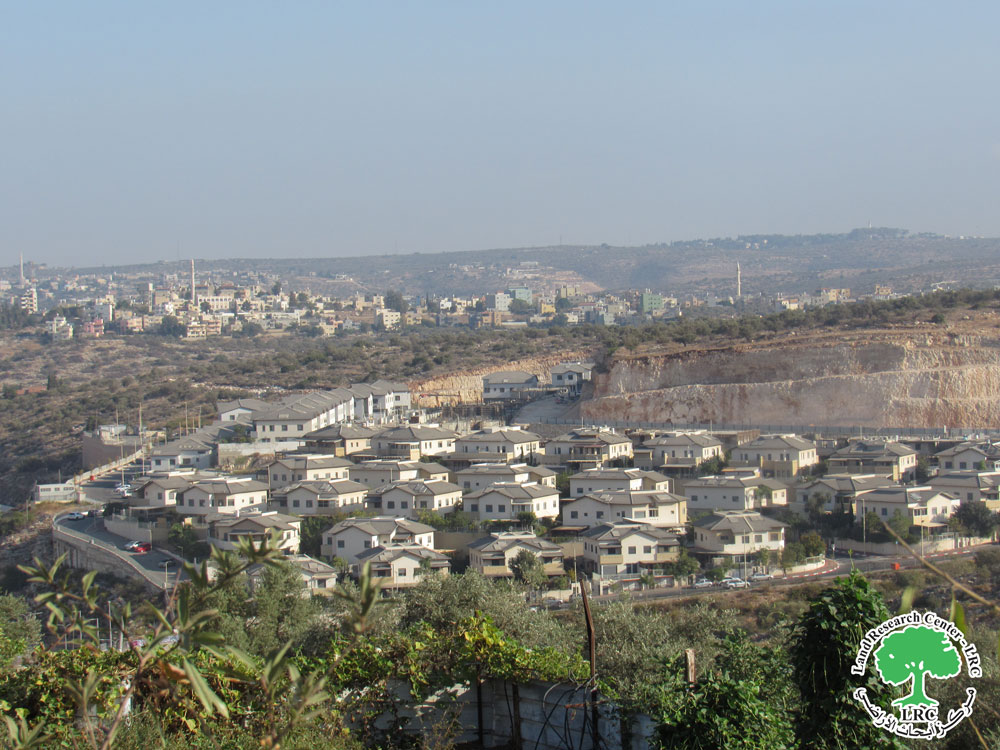Synopsis about the Israeli colonization project in the West Bank
Colonization has long been a key objective of the Zionist project in the Middle East. The colonization of historical Palestine began with the rise of Political Zionism in 19th Century Europe, which led to the creation of the state of Israel and the expulsion of 750,000-800,000 Palestinians in 1948. Political Zionists have long considered the colonization of the entire territory as an inalienable right of the Jewish people.
The Zionist colonization program gained another victory in 1967 when Israeli forces occupied the West Bank (including East Jerusalem), the Gaza Strip, the Syrian Golan Heights and the Lebanese Sheba'a Farms. Israeli military and civilian planners quickly drafted plans to settle the recently occupied territory and began building Jewish colonies on appropriated lands.
Palestinians in the West Bank and Gaza Strip have witnessed some of the most intense and concerted Israeli settlement campaigns. There are currently at least 210 settlements and 217 settlement outposts in the West Bank and Gaza Strip. Palestinians residing in the occupied territory, however, have incontestable ownership of the land and Palestinian land rights have constituted a major obstacle to successive Israeli government plans to exploit and settle the OPT.
The first part of the report at hand intends to shed light on the status of Israeli settlement expansions in the occupied Palestinian territory (OPT) between the years 2002 and 2004, and more specifically will concentrate on the period between January and August 2004, where Israel continued to expand its illegal settlements at increasing rates. According to analysis performed by the Geographic Information Systems (GIS) Unit at ARIJ, it was found that between August 2002 and August 2004, 32,632 new housing units were built in West Bank settlements. Between January 2004 and August 2004, Israeli occupying forces built 15,604 new housing units in West Bank settlements (an increase of more than 4% in only 8 months). ARIJ also identified 217 illegal settlement outposts in the West Bank. The report also looks at Settlement expansion in light of the international peace initiatives in the region, international laws, human rights, international covenants and United Nations Security Council resolutions. See maps of Israeli settlements in thre West Bank and Gaza Strip. Example of Expansions in Israeli Settlements
Israel at no time did cede its colonial activities in the West Bank, even when it was massively engaging in constructing the Segregation Wall that cuts deep into the West Bank grabbing the most fertile agricultural land and main water resources. On the contrary, settlement expansions mushroomed throughout the West Bank, violating in the process numerous international laws and agreements; right from UNSC resolutions, the Fourth Geneva convention of 1949 to the Palestinian-Israeli Oslo 'Peace' Accords signed 1993 & 1995, the Mitchell report recommendations and the Road Map.
Between August 2002 and August 2004, Israel constructed around 32,632 new housing units in 58 settlements in the West Bank (see Appendix for a complete list of new housing units by settlement).
The majority of this expansion took place in 30 settlements located in the Western Segregation Zone, between the Segregation Wall and the 1949 armistice line, or Green Line (the internationally recognized border of Israel). Table 1 and Chart 1 illustrate this settlement expansion:
|
Table 1: Israeli Settlement Expansion in the West Bank (2002 -2004) |
|||
|
Location |
Number of Settlements |
New Units |
Percent of Total |
|
The Western Segregation Zone (west of the Segregation Wall) |
30 |
26, 816 |
82% |
|
The Eastern Segregation Zone (the Jordan Valley and Dead Sea shores) |
10 |
720 |
2% |
|
Central West Bank |
18 (some of which are nominated for evacuation) |
5, 096 |
16% |
|
Total |
58 |
32,632 |
100% |
The bulk of Israeli construction projects between August 2002 and August 2004 occurred in settlements in the East Jerusalem and Bethlehem regions in the region known as the 'Greater Jerusalem,' which includes the Maale Adumim block, Gosh Etziyon Block, Givaat Zeev and Giv'at Binyamin blocks. Approximately 15,400 units (47%) were added to Jerusalem settlements and nearly 10,500 units (32%) were constructed in the Bethlehem settlements. The largest expansion projects occurred in the following five settlements (most of them are within 'Greater Jerusalem' region):
-
Ma'ale Adumim (Jerusalem): 5,712 new housing units.
-
Betar Illit (Bethlehem): 4,832 new housing units.
-
Har Homa (Bethlehem): 3,692 new housing units.
-
Har Adar (Jerusalem): 2,832 new housing units.
-
Giv'at Binyamin or Adam (Jerusalem): 1,536 new housing units.
-
Expansion of Israeli Settlements in West Bank in 2004
The most intense Israeli colonization activity occurred during 2004. From January to August 2004, Israel constructed 15,604 housing units in 26 Israeli settlements in the West Bank (nearly half of the total between 2002 and 2004). No less than 86% of the new units were added to settlements in the Western Segregation Zone. In addition, 13,220 (70%) of the settlement units built during the first eight months of 2004 were added to settlements in the Jerusalem and Bethlehem Districts. Chart 2 and 3 illustrate these trends:
Chart 2: Israeli Settlement Expansion in the West Bank (January -August 2004)
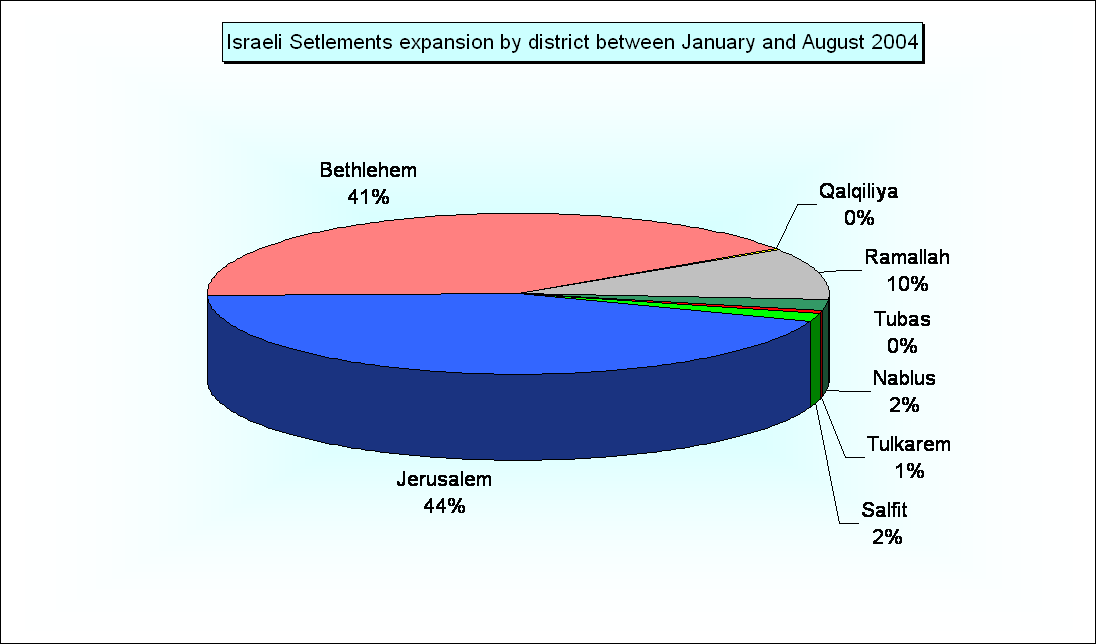
Chart 3: Israeli Settlement Expansion in the West Bank by District (January -August 2004)
he accelerated settlement expansion in the Western Segregation Zone reflects Israel's intention to physically connect this area to Israel. Settlement construction west of the Segregation Zone creates 'facts on the ground' and the type of 'new realities' Bush spoke of in his letter of April 2004. These settlements are being expanded onto Palestinian lands adjacent to the Wall and between Israeli settlements and towns inside the Israeli border. As a result, new housing units physically link the illegal settlements to Israel, creating contiguous Jewish areas.
Most Israeli settlement expansion in the Jerusalem and Bethlehem Districts also comes within this context. These settlements represent Israel's vision of a 'Greater Jerusalem' urban area stretching deep into the West Bank. Settlement expansion links large settlement areas to each other, fracturing the continuity of Palestinian communities and dominating the indigenous Palestinian population. The Segregation Wall plays a crucial role in this respect, encircling Israeli settlements and cutting off Palestinian areas, sealing them outside the Jerusalem region. The Wall is meant to ensure that the city maintains a Jewish majority.
Expansion of Israeli Settlements in the Gaza Strip
Although politicians and media pundits continue to speak of an Israeli plan to 'disengage' from the Gaza Strip, recent actions by Israeli occupying forces in Gaza suggest thatfar from preparing a withdrawal, the Israeli government is consolidating its hold on the illegal Gaza settlements. Less than three weeks after Sharon announced his Disengagement Plan on February 2, 2004, Israeli military authorities in Gaza issued land seizure documents and demolition orders to Palestinian families near the settlements of Netzarim and Kfar Darom. The seizures and demolitions were justified on the basis of 'military necessity' and the order for the Netzarim actions stated that 'the seizure of land is carried out in light of the current security situation and for absolute military needs (security wall – Netzarim, Gaza) to establish security facilities.'
Thus, although Israel has said it is leaving Gaza, it has continued to build walls and other 'security facilities' on Palestinian land near the settlements of Netzarim and Kfar Darom. The walls and other structures extend the borders of the illegal settlements and bring larger areas of Palestinian land under direct Israeli control.
Meanwhile, a 'revised disengagement plan' passed by the Israeli Knesset on October 26, 2004, includes a provision to form a committee to approve expansion of the Gaza settlements. Plots of land continue to be leased to Israeli settlers and building permits have been granted. In fact, according to Ha'aretz at least 350 development projects have been submitted for approval and on July 26, 2004 'Gaza Regional Council Chairman Avner Shimoni won approval for 26 bullet-proof buildings in Gush Katif. The new buildings are meant for residences, and [new] school rooms are [planned] for Kfar Darom, Netzarim and Neve Dekalim.'
In fact a new aerial survey commissioned by the Israeli organization Peace Now, recently identified settlement expansion in at least eight Gaza Strip settlements. Peace Now's findings, which were released on February 15, 2004, and located the expansion of settlement units and buildings in the settlements of Neve Dekalim, Elie Sinai and Dugit. Four other settlements, Bnei Atzmon, Gan Or, Netzar Hazani, Ganei Tal and Slav, have colonized additional agricultural areas and constructed new greenhouses and other buildings.
The expansion of the Gaza settlements and the construction of new walls and security facilities contradict the stated intentions of Israel's 'disengagement plan.' Far from seriously moving ahead with the plan, the Israeli government is expanding and consolidating its settlements. According to the Gaza-based Palestinian Centre for Human Rights (PCHR), these measures 'are part of a broader plan to expand direct Israeli territorial control in many areas of the Gaza Strip.' In fact, PCHR noted 'a clear increase in the use of land seizure orders in the Gaza Strip in 2004.' Table 2 shows land areas shaved in each Palestinian district in Gaza between 2003 and 2004.
|
Table 2: Land areas shaved in each Palestinian district in Gaza between 2003 and 2004. |
|||||
|
|
|||||
|
Gaza Districts |
Land shaved – 2003 (Dunums) |
Land shaved – 2004 (Dunums) |
Increase in land shaved between 2003 and 2004 in Dunums |
Percentage of increase % |
Notes |
|
|
|||||
|
Rafah District |
2217 |
3458 |
1241 |
56% |
Israel seeks to create a security buffer zone along Gaza Strip southern border, north of the Egyptian border |
|
Khan Yunis District |
3115 |
5473 |
2358 |
76% |
Israel seeks to create a security passageway as one of two access strips for the Israeli Army between Gaza eastern border and the seashore of Gaza |
|
Dier Al-Balah District |
2496 |
4070 |
1574 |
63% |
The bulldozed areas are mainly agricultural fields that belong to Palestinian residents who are no longer allowed to cultivate it under Israeli security pretexts |
|
Gaza District |
3836 |
12138 |
8302 |
216% |
Israel seeks to create a security passageway as an access strip for the Israeli settlers of Nitzarim and the Israeli Army between Gaza eastern border and the seashore of Gaza |
|
Jabalyia District |
7483 |
17475 |
9992 |
134% |
Israel seeks to construct a security passageway separating the settlements of Dugit, Elei Sinai, Nisanit and Erez industrial zone from Jabalyia district. |
|
|
|||||
|
Total |
19147 |
42614 |
23467 |
123% |
|
Planned Settlement Construction in 2005
Current Israeli plans call for continued settlement expansion in the Western Segregation Zone, particularly in Jerusalem and Bethlehem districts. In addition, recent construction projects in settlements in the Qalqilya District are occurring well outside the settlement boundaries on recently appropriated Palestinian land. A report released by the Israeli daily Yedoit Aharonot on February 25, 2005 revealed that the Israeli government has planned at least 6, 391 new housing units as part of Israel Lands Administration (ILA) settlement plans for 2005. A list of settlements and expansion plans printed in the article, however, places the planned expansion at 7,891 units. Furthermore the ILA plan for 2005 includes also the consolidation of 120 illegal outposts in the West Bank, 'for which planning and contractual arrangements' will be made. Table 3 details these proposed expansions:
|
Table 3: Planned Settlement Expansion in the West Bank (2005) |
|||
|
|
|||
|
Name |
New Housing Units Planned |
West Bank District |
Planned Units by District |
|
|
|
|
|
|
Ma'ale Adumim |
3,600 |
Jerusalem |
4,002 units |
|
Geva Binyamin (Adom) |
200 |
||
|
Givat Ze'ev |
132 |
||
|
Har Adar |
70 |
||
|
|
|
|
|
|
Betar Illit |
500 |
Bethlehem |
559 units |
|
Har Gilo |
35 |
||
|
Alon Shvut |
24 |
||
|
|
|
|
|
|
Modi'in Illit |
1,500 |
Ramallah |
1,500 units |
|
|
|
|
|
|
Zufin |
1,500 |
Qalqilya |
1,500 units |
|
|
|
|
|
|
Etz Ephraim |
240 |
Salfit |
330 units |
|
Elkana |
90 |
||
|
|
|
||
|
Total Planned Expansion in the West Bank (2005) |
7,891 units |
||
The vast majority of planned housing units are in settlements in the Western Segregation Zone, and more than half of them are in the Jerusalem district. The expansion of these settlements consolidates Israeli control over the area. Several cases detail these developments:
Case A: Nof Hasharon, Qalqilya District
In August 2004, Israeli bulldozers broke ground on a new settlement, named Nof Hasharon, on Palestinian land south of Qalqilya. According to Israeli occupation authorities, the new settlement is under the jurisdiction of the older settlement of Alfei Menashe. Alfei Menashe, however, sits over 3 km to the east of Nof Hasharon. The new settlement in fact rests along the Green Line adjacent to the town of Nirit (which is inside Israel).
According to Israeli military officer Oded Langerman: 'After most of [Nof Hashoron] is populated, the two neighbourhoods (Nof Hasharon and Nirit) will be linked into a single security zone by taking down the fence thatruns along the edge between the two neighborhoods' (quoted by the AFP). The 52 homes planned in the new settlement will also be connected to Nirit's water, sewage and electricity networks and settlers will send their children to schools in the neighboring town. Israel's plan to link the new settlement with the infrastructure of Nirit, will create a contigously inhabited Jewish block between the Israeli town and the illegal settlement of Alfei Menashe (more than 20 minutes away by car).
Case B: Zofin North, Qalqilya District
In November 2004, Israeli occupying forces cleared olive groves on Palestinian lands belonging to the village of Jayyus, north of Qalqilya, to begin the construction of the new settlement of Zufin North. The recently released settlement expansion plans calls for the initial construction of 1,500 housing units on the site. The new settlement will spread for more than 345 dunums (3.5 km2) and connect with Zufin settlement to the south creating a continuous settlement block on Jayyus lands west of the Segregation Wall. The site of the new Zufin North settlement is nearly 5 km from the Green Line (See Map Two).
Case C: The E1 Plan (Ma'ale Adumim), Jerusalem District
The largest expansion project currently planned, however, is the E1 expansion project adjacent to the sprawling Ma'ale Adumim settlement in East Jerusalem. The E1 Plan calls for the largest single settlement construction project in recent history. Bulldozers begun to clear Palestinian land north of the large Israeli settlement of Ma'ale Adumim in December 2004 but it was only on February 28 that the Israeli government announced its intention of building at least 3,500 new housing units on the site. The E1 Planintends to appropriate approximately 12,500 dunums (125 km2) of Palestinian lands belonging to the Palestinian villages of Al-Tur, 'Anata, Al Eizaryieh, Abu Dis, Al Essawyieh and Hizma.
Ma'ale Adumim is the largest Israeli settlement in the OPT with a population of approximately 30,000 and more than 22,000 dunums (220 km2) of expropriated Palestinian lands (of which only about 3,000 dunums (3 km2) constitute the built up area. The E1 Plan will increase this area by more than 50% and will link Ma'ale Adumim to other settlements in East Jerusalem (including Pisgat Ze'ev, Pisgat Omer, Neve Yaa'acov and French Hill).
The new expansion plays a crucial role in Israel's goal of isolating Jerusalem from the rest of the West Bank and encircling the Palestinian neighborhoods of East Jerusalem with Jewish settlements. The E1 expansion also drives a deep wedge through the center of the West Bank, cutting of the northern Districts from the south and allowing Israel to control Palestinian movement between the disconnected cantons. Paired with already existing settlements in the Jerusalem region, the E1 plan also makes a geographically contiguous and viable Palestinian State impossible. Photo One shows the area targeted by the E1 Expansion Plan:
Photo One: Israel's E1 Settlement Expansion Plan
Settlement expansion in light of the Roadmap Peace Plan
The Roadmap peace plan was introduced on April 30, 2003 by the so-called 'Middle East Quartet,' comprising the United Nations, European Union, United States and Russia, and calls for an immediate 'freeze' on Israeli settlement activity as part of the first phase of implementation.
The roadmap requires that the '[Government of Israel] immediately dismantles settlement outposts erected since March 2001, [and] consistent with the Mitchell Report, [Government of Israel] freezes all settlement activity (including natural growth of settlements).'
The plan was instantly adopted in full by the Palestinian negotiating team and the Palestinian National Authority (PNA). The Government of Israel, however, has never accepted the Roadmap as it is written.
Ariel Sharon's Government only approved the document with 14 reservations submitted to the United States for consideration on May 25, 2003 (ignoring the other three members of the Quartet). The reservations absolve Israel of any substantive requirements during the first phase of the Roadmap, focusing attention only on Palestinian obligations. Specifically, in the context of settlement expansion, the Israeli reservations demand that 'there will be no involvement with issues pertaining to the final settlement. Among issues not to be discussed: settlement in Judea, Samaria and Gaza (excluding a settlement freeze and illegal outposts); the status of the Palestinian Authority and its institutions in Jerusalem; and all other matters whose substance relates to the final settlement.' Further Israeli reservations serve to sever the resolution of the conflict from its basis in international law. Israel insists on 'the removal of references other than [UNSC Resolution] 242 and 338,' which do not explicitly mention Israeli settlements.
The original Roadmap document is clear on its position that both Palestinians and Israelis must commit to a cessation of military operations during the First Phase of implementation. Such military activities are defined broadly for Israel in the obligation that 'all official Israeli institutions end incitement against Palestinians.'
The document Israel accepted however, with the added 14 reservations, refuses this obligation and reflects Israel's insistence on continuing its colonization program in the OPT.
The Quartet has consistently argued that 'no party should undertake unilateral actions that could prejudge the resolution of final status issues.' In it's statement of September 22, 2003, moreover, the Quartet urged 'the Government of Israel to implement its obligations under the Road Map, including . . . a settlement freeze, as called for by President Bush and in the Road Map' and noted that 'the lack of action in this regard is a cause for concern.'
These repeated statements, however, have come to nothing. The Quartet has simply refused to enforce Israel's obligations. In fact, the United States has consistently acted to undermine the authority of the Quartet in implementing the Roadmap. As Israel's only long-term strategic ally, the role of the United States in supporting the occupation of the West Bank and Gaza Strip has been crucial. The US has provided Israel an average of over$5 billion of aid per year (including at least $3.2 billion in military aid).
US political and diplomaticsupport has also allowed Israel to ignore countless censures by the United Nations and, recently, US support was instrumental in Israel's flouting of the ruling of the International Court of Justice that found the Segregation Wall to be illegal.
President Bush's Letter to Prime Minister Sharon on April 2004
On April 14, 2004, US President George W. Bush sent a letter to Israel's Prime Minister Ariel Sharon. The letter reversed more than 50 years of official US policy and undermined the very foundations of the Israeli-Palestinian peace process, including the Roadmap peace plan. Bush's letter endorsed Israeli settlements in the Occupied Palestinian Territory (OPT), stating:
'In light of new realities on the ground, including already existing major Israeli populations centers, it is unrealistic to expect that the outcome of final status negotiations will be a full and complete return to the armistice lines of 1949, and all previous efforts to negotiate a two-state solution have reached the same conclusion. It is realistic to expect that any final status agreement will only be achieved on the basis of mutually agreed changes that reflect these realities.'
Bush's letter is the first time a US president has officially endorsed Israel's colonization program in the OPT and the illegal annexation of occupied Palestinian land. In fact, the letter comes within the context of rapid settlement expansion throughout the OPT, especially in the Segregation Zone between Israel's internationally recognized border and the Segregation Wall in the West Bank. Bush also clarified his opposition to the Right of Return for Palestinian refugees, implying that the US is not seeking a solution to the conflict based on international law.
Finally, the Oslo II Interim Agreement states, 'neither sides shall initiate or take any step that will change the status of the West Bank and the Gaza Strip pending the outcome of the permanent status negotiations.'
Settlement expansion in light of the United Nations Security Council resolutions, international laws, human rights and international covenants
Israel's Settlement Program in International Law
Israel's colonization of the Occupied Palestinian Territory (OPT) violates numerous United Nations Security Council and General Assembly Resolutions, primarily UN Security Council Resolution 242 (1967). UNSCR Resolution 242 calls for 'the withdrawal of all Israeli armed forces from the territories occupied' in the 1967 war. UNSC 242 effectively outlaws Israel's 37 year occupation of the West Bank (including East Jerusalem) and the Gaza Strip.
The principles of Resolution 242 are reiterated again in Security Council Resolution 452 (1979) which calls upon 'the Government and people of Israel to cease, on an urgent basis, the establishment, construction and planning of settlements in the Arab territories occupied since 1967, including Jerusalem,' the Security Council Resolution 446 (1979) which '[d]etermines that the policy and practices of Israel in establishing settlements in the Palestinian and other Arab territories occupied since 1967 have no legal validity and constitute a serious obstruction to achieving a comprehensive, just and lasting peace in the Middle East' and a further time in Security Council Resolution 465 (1980).
Israel's continued refusal to implement these binding resolutions means that it belligerently occupies the OPT. As an occupying power, Israel is also bound by international humanitarian and human rights laws.
The first major document of international humanitarian law, The Hague Regulations of 1907, contains specific provisions outlawing Israel's colonization activities. The destruction of Palestinian civilian property and the seizure of Palestinian lands to build Israeli colonies, by-pass roads and the Segregation Wall is explicitly outlawed by Hague Convention IV, Article 23 (G), which clearly states that the occupying power is forbidden 'to destroy or seize the enemy's property, unless such destruction or seizure be imperatively demanded by the necessities of war.'
Israel's colonization program also violates the most important document of international humanitarian law – the Fourth Geneva Convention Relative to the Protection of Civilian Persons in a Time of War (hereinafter the Convention). In particular, Israel's settlements are built, and expanded, upon appropriated Palestinian land. Settlement construction is often preceded by military action, including the destruction of Palestinian property such as homes or olive groves. The destruction of civilian property is prohibited by Article 53 of the Convention which states that: 'Any destruction by the Occupying Power of real or personal property belonging individually or collectively to private persons, or to the State, or to other public authorities, or to social or cooperative organizations, is prohibited, except where such destruction is rendered absolutely necessary by military operations.'
Article 147, moreover, defines 'extensive destruction and appropriation of property, not justified by military necessity and carried out unlawfully and wantonly' as a 'grave breach' of the Convention and defines these breaches as War Crimes. The High Contracting Parties (signatories) to the Convention are therefore required to 'enact any legislation necessary to provide effective penal sanctions' to stop Israel's colonization activities and prosecute Israeli officials in an international court.
Israel's settlement policy is also strictly forbidden by the Fourth Geneva Convention. In addition to violating the prescriptions against destruction to civilian property, Israel's program of populating the settlements with Jewish citizens violates Article 49 of the Convention. Article 49 states that 'the occupying power shall not deport or transfer parts of its own population into the territories it occupies.'
Conclusion: Is Peace Possible under the Settlements ?
Israel has dramatically accelerated its settlement program over the last two years, constructing 32,632 new housing units in the West Bank. The most dramatic increase occurred between January and August 2004 when 15,604 new units were erected. The majority of this expansion occurred in the Western Segregation Zone between the Segregation Wall and the 1949 armistice line. Settlements in the Jerusalem and Bethlehem Districts witnessed especially rapid expansion, accounting for 70% of Israel's new settlement units in the first 8 months of 2004.
Settlements in the Gaza Strip have also grown over the past two years. Although the Israeli government has repeatedly stated that it intends to 'disengage' from the Gaza Strip, Israel has failed to make any progress in this regard. Instead, Israeli occupying forces have built new additions to settlements in Gaza. In this context, the 'Disengagement Plan' appears to be little more than a cleverly disguised ploy to divert attention from events unfolding in the West Bank.
In fact, on February 15, 2005, Ariel Sharon told reporters that the disengagement plan will reinforce Israel's existing settlement blocks in the West Bank which 'will be part of the Jewish state in the future.'
Israel's intention to annex these areas is reflected in the continued expansion of settlements in the Western Segregation Zone. Recently released plans for the construction of at least 7,891 new settlement units in 2005 are the latest developments in these efforts.
George W. Bush's April 2004 letter gave the Sharon's Government grounds to maneuver and expand strategic Israeli settlements. Settlement expansion in the Western Segregation Zone, particularly in the Jerusalem and Bethlehem Districts, creates continuity between the settlements and Israel, indicating an attempt to hold on to these settlements permanently. Bush's letter validated this effort in the eyes of the US Government.
These Israeli colonization activities are blatant violations of international law and the Roadmap peace plan. The Roadmap's provision to 'freeze' settlement construction was never accepted by Israel. In fact, instead of limiting settlement construction, Israel has accelerated settlement expansion since the introduction of the Roadmap. The international community and the Quartet, however, have been utterly incapable of enforcing Israeli compliance to the Middle East Peace Process. Instead, the United States has granted Israel unequalled immunity in ignoring international law, expanding its illegal settlements and making the creation of a viable, contiguous and independent Palestinian state a near impossible task.
Israel's settlements and the Segregation Wall are squeezing the growing Palestinian population into ever smaller enclaves and ghettos and creating the conditions for continued enmity and conflict in the region. If Israel's colonization program is not checked by the international community it could soon trigger a renewed outbreak of violence in the Middle East with drastic consequences for both Palestinians and Israelis.
Appendix:
New Housing Units in the West Bank, by Settlement (August 2002 – August 2004)
|
Settlement Name |
Total New Units |
Location |
|
|
|
|
|
Betar Illit |
4832 |
Bethlehem |
|
Har Homa |
3696 |
Bethlehem |
|
Allon Shevut |
400 |
Bethlehem |
|
Rosh Zurim |
64 |
Bethlehem |
|
Elazar |
460 |
Bethlehem |
|
Neve Daniyyel |
576 |
Bethlehem |
|
Efrat |
224 |
Bethlehem |
|
Tekoa D |
60 |
Bethlehem |
|
Nokdim |
40 |
Bethlehem |
|
El David |
56 |
Bethlehem |
|
Negohot |
160 |
Hebron |
|
Susiya |
32 |
Hebron |
|
Rehan |
16 |
Jenin |
|
Beqaot |
40 |
Jericho |
|
Tomer |
24 |
Jericho |
|
Gilgal |
16 |
Jericho |
|
Massua |
16 |
Jericho |
|
Yitav |
180 |
Jericho |
|
Rekhes Shuafat |
672 |
Jerusalem |
|
Givat Shapira |
924 |
Jerusalem |
|
Kfar Adumim |
1056 |
Jerusalem |
|
Ma'ale Adumim |
5712 |
Jerusalem |
|
Har Adar |
2832 |
Jerusalem |
|
Mizpe Yehude |
76 |
Jerusalem |
|
Givat Ze'ev |
300 |
Jerusalem |
|
Givat Hadasha |
132 |
Jerusalem |
|
East Talpiyot |
1080 |
Jerusalem |
|
Almon |
132 |
Jerusalem |
|
Mizpe Yedude |
60 |
Jerusalem |
|
Kokhav Yaacov |
888 |
Jerusalem |
|
Adam (Geva Binyamin) |
1536 |
Jerusalem |
|
Bracha |
720 |
Nablus |
|
Yizhar |
128 |
Nablus |
|
Eli |
204 |
Nablus |
|
Mizpe Rahel |
156 |
Nablus |
|
Itamar |
12 |
Nablus |
|
Shilo |
408 |
Nablus |
|
Elon Moreh |
120 |
Nablus |
|
Elkana |
120 |
Qalqiliya |
|
Ma'ale Shomron |
160 |
Qalqiliya |
|
Modi'in illit |
1704 |
Ramallah |
|
Mevo Horon |
232 |
Ramallah |
|
Beit Horon |
84 |
Ramallah |
|
Mattityahu |
120 |
Ramallah |
|
Beit Arye |
324 |
Ramallah |
|
Hallamish |
36 |
Ramallah |
|
Ofra |
420 |
Ramallah |
|
Ateret |
24 |
Ramallah |
|
Revava |
384 |
Salfit |
|
Nofim |
72 |
Salfit |
|
Arial |
324 |
Salfit |
|
Ginnot Shomeron |
48 |
Salfit |
|
Kfar Tapuah |
48 |
Salfit |
|
Hemdat |
32 |
Tubas |
|
Shadmot Mehola |
252 |
Tubas |
|
Rotem (Nahal Rotem) |
20 |
Tubas |
|
Maskiyyot |
20 |
Tubas |
|
Enav |
168 |
Tulkarm |
|
|
|
|
|
Total New Units |
32,632 |
|
:::::::::::::::::____
- [1] Palestinian Centre for Human Rights. February 25, 2004; and March 9, 2004 (www.pchrgaza.org).
- [2] quoted in Ibid, February 25, 2004 (www.pchrgaza.org).
- [3] Aluf Benn and Nir Hason, Ha'aretz, July 27, 2004.
- [4] 'Construction in Gaza (August – December 2004).' Peace Now. February 15, 2005 (http://www.peacenow.org.il/site/en/peace.asp?pi=61&fld=191&docid=1192).
- [5] Palestinian Centre for Human Rights. 25 February 2004; and 9 March 2004 (www.pchrgaza.org).
- [6] Ibid (www.pchrgaza.org).
- [7] Yedoit Aharonot (Hebrew). February 25, 2005. See also ' APN Attacks Plan for 6,000+ New Settlement Houses, Authorization for 120 Illegal Outposts.' Americans for Peace Now. February 25, 2005 (http://www.peacenow.org/pr.asp?rid=&cid=337).
- [8] Ibid, (http://www.peacenow.org/pr.asp?rid=&cid=337)
- [9] 'Bulldozers Bite into Israel's Promise over Settlements.' Associated French Press (AFP). 29 November 2004.
- [10] Ibid.
- [11] See the ARIJ Case Study on the Zufin North settlement
- [12] See the ARIJ Case Study on the E1 Plan (https://poica.org/editor/case_studies/view.php?recordID=428).
- [13] A Performance-Based Road Map to a Permanent Two-State Solution to the Israeli-Palestinian Conflict (Phase One: Settlements). The Electronic Intifada. June 24, 2003 (http://electronicintifada.net/bytopic/historicaldocuments/73.shtml).
- [14] Ibid (http://electronicintifada.net/bytopic/historicaldocuments/73.shtml)
- [15] 'Israeli Reservations and Resolutions on Roadmap.'?? Resource Library: Council for the Advancement of Arab-British Understanding. 25 May 2003. (www.caabu.org).
- [16] Ibid.
- [17] Ibid.
- [18] A Performance-Based Road Map to a Permanent Two-State Solution to the Israeli-Palestinian Conflict (Phase One: Settlements). The Electronic Intifada. June 24, 2003 (http://electronicintifada.net/bytopic/historicaldocuments/73.shtml).
- [19] Quartet Statement. The Electronic Intifada. March 5, 2004, (http://electronicintifada.net/bytopic/historicaldocuments/352.shtml). Almost the same sentence was part of Quartet statements made on September 22 and May 4, 2003.
- [20] Quartet Statement. The Electronic Intifada. September 22, 2003: (http://electronicintifada.net/bytopic/historicaldocuments/299.shtml).
- [21] Israel has received nearly $100 billion in US aid since the founding of the state in 1948. The US Campaign to End the Occupation, 2005. (www.endtheoccupation.org).
- [22] Ibid.
- [23] The Right of Return is codified in law pursuant to UNSC Resolution 194.
- [24] Chapter two, Article 31, item 7 of the Israeli-Palestinian Interim Agreement on the West Bank and the Gaza Strip (Oslo II), Washington, D.C., September 28, 1995.
- [25] See also, UNSC Resolution 338 (1973), UNSC Resolution 478 (1980), and UNSC Resolution 1397 (2002).
- [26] 'Israel is at crossroads of peace, says Sharon.' The Associated Press. February 15, 2005 (http://www.iht.com/articles/2005/02/15/africa/web.sharon.html).
- [27] ARIJ GIS Database, 2004.
Prepared by:
The Applied Research Institute – Jerusalem


